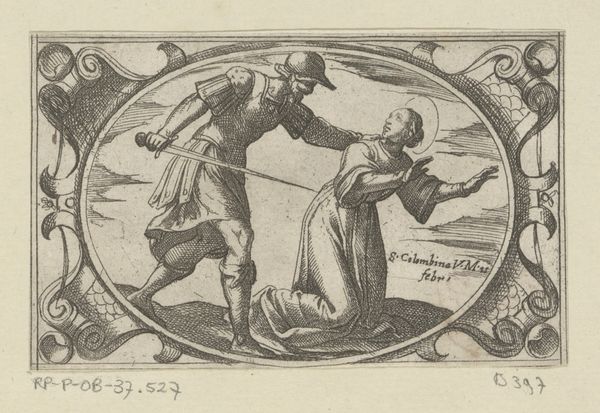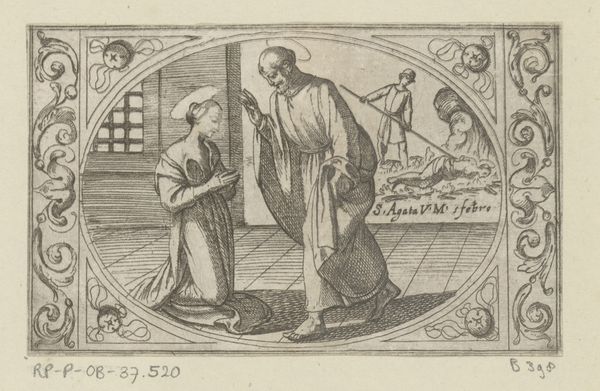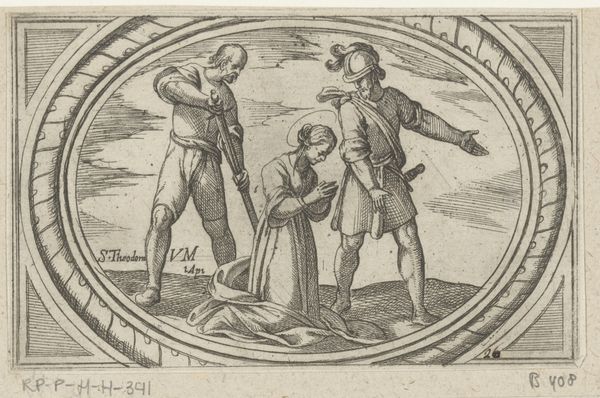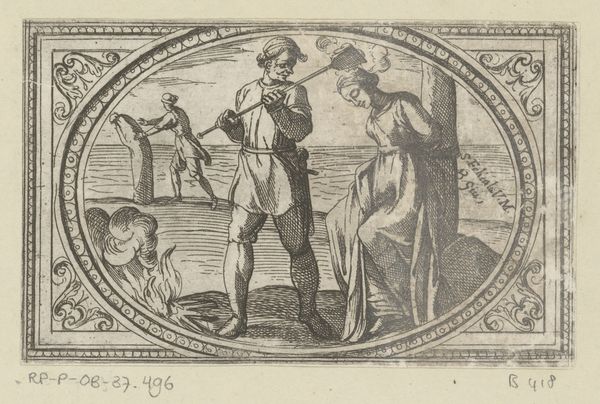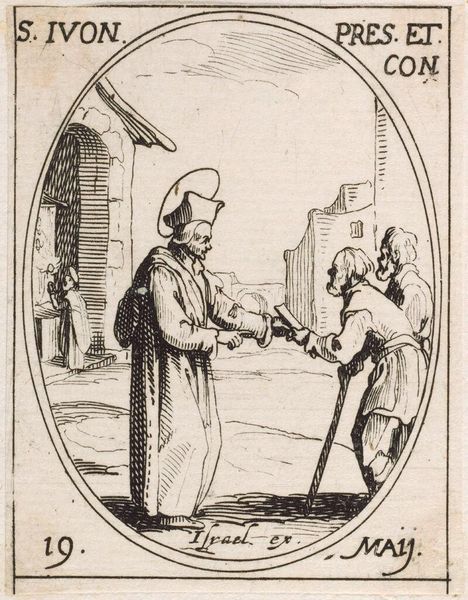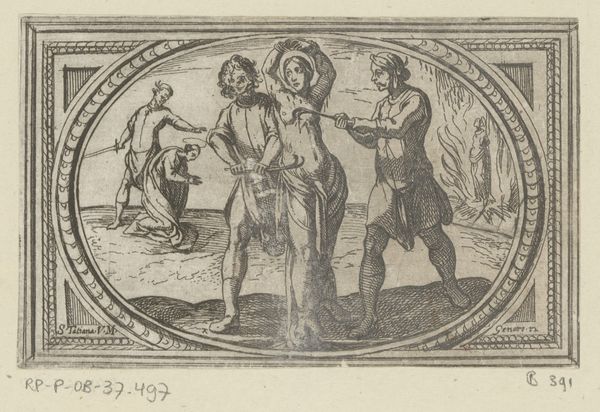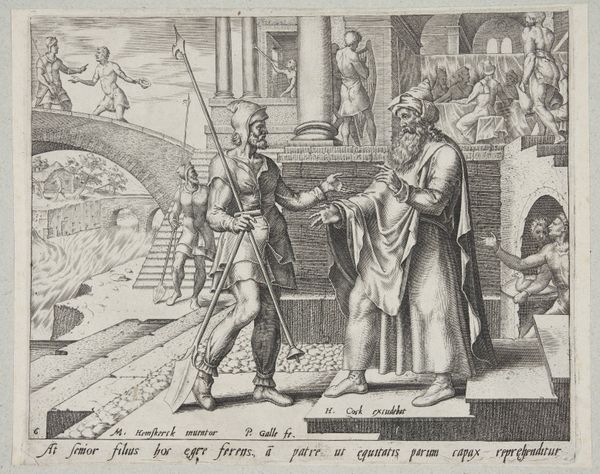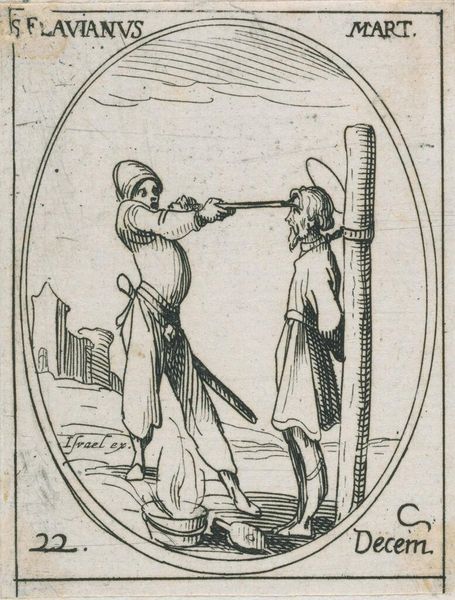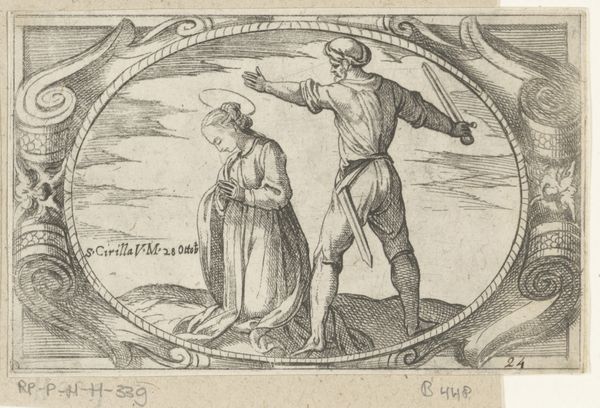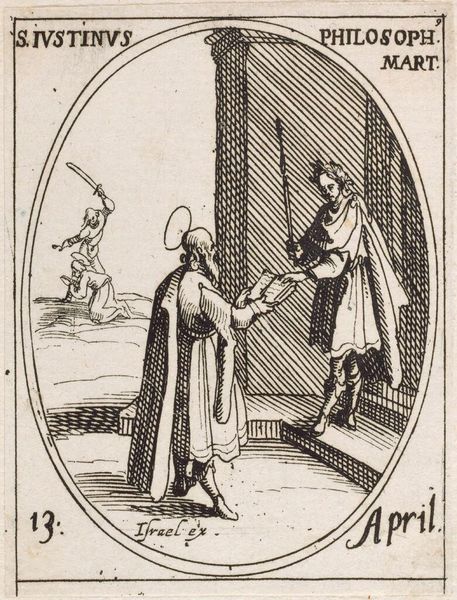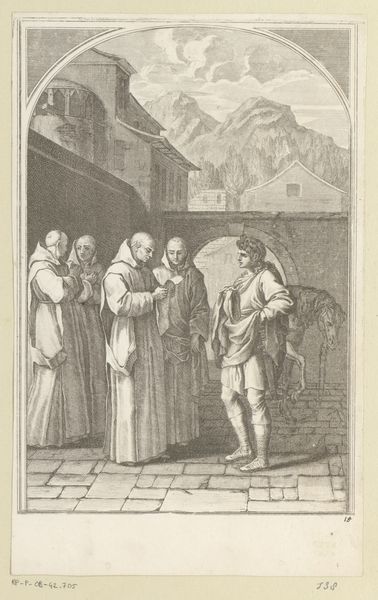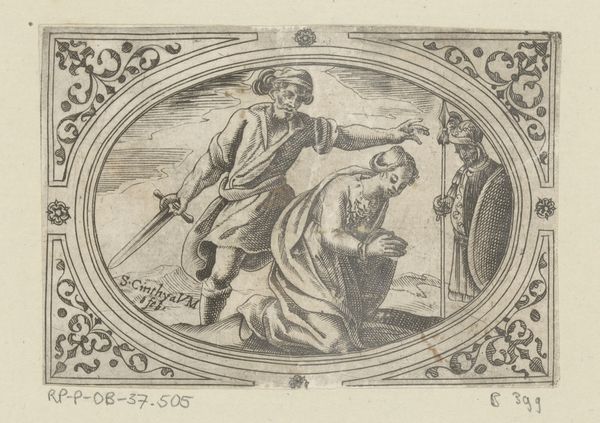
print, engraving
#
narrative-art
#
baroque
# print
#
old engraving style
#
figuration
#
line
#
history-painting
#
italian-renaissance
#
engraving
Dimensions: height 73 mm, width 114 mm
Copyright: Rijks Museum: Open Domain
Curator: This engraving, "H. Cantianilla," produced between 1565 and 1630, hails from the hand of Antonio Tempesta, a master of the Italian Renaissance, and resides here at the Rijksmuseum. Editor: Gosh, talk about tension! It’s spare, but something about that stark composition makes me a bit uneasy. I sense some impending doom! Curator: A pertinent interpretation, given the narrative at play. Notice how the linearity of the engraving, typical of Tempesta's style, emphasizes the dramatic weight of the moment. The precise rendering creates a stark visual and emphasizes form. Editor: Right, and the framing! That serpentine border almost seems to trap the scene, magnifying the subject and heightening the feeling that we are flies on the wall—like an invitation to witness this dark act. It lends to a rather suffocating feel, doesn't it? I think I am going to be a vegetarian forever. Curator: Precisely. The composition guides our eyes deliberately, making the figures central, almost forcing us to analyze their pose and engagement. The details, even within the constraints of the medium, invite our exploration. Editor: I’m really drawn to how that brutal, straight sword clashes with the almost resigned posture of the woman. Her face is a shadow and has an unworldly acceptance of her own destiny. This resonates really deeply with the complex and sometimes gruesome history embedded in Renaissance art. Curator: Absolutely. Through that formal starkness, the engraving distills a complex historical narrative into a digestible image that carries considerable emotional weight and artistic intent. Editor: What a potent little package. To think a simple print could harbor so much raw narrative power and compositional strength. Curator: Indeed. In essence, "H. Cantianilla" is a testament to Tempesta’s sophisticated control of form and an understated narrative art.
Comments
No comments
Be the first to comment and join the conversation on the ultimate creative platform.
